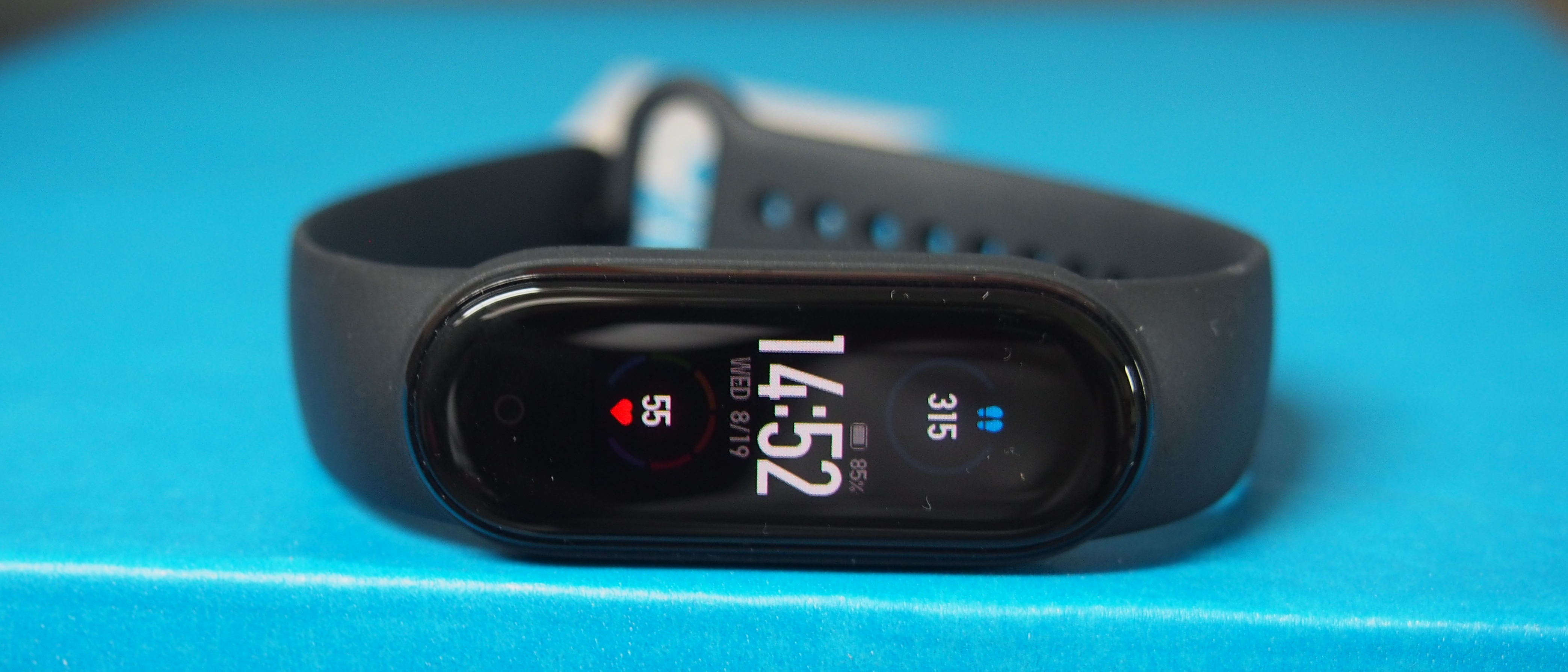TechRadar Verdict
Following on from the excellent Mi Band 4, the Xiaomi Mi Smart Band 5 again offers exceptional value for money. It delivers core fitness tracking features well, and improvements made to the color display and richer sports tracking make it more desirable. The major disappointment is the fact that the global edition is missing NFC, voice assistant support and some new watch faces – all of which are only available in China. If you can live without those features, this is a great fitness tracker that’s kind to your bank balance.
Pros
- +
Brighter, more vibrant display
- +
Improved charging setup
- +
Strong heart rate performance
Cons
- -
GPS sports tracking setup is fiddly
- -
Quite a plain look
- -
Missing NFC and smart assistant outside China
Why you can trust TechRadar
Two-minute review
The Xiaomi Mi Smart Band 5 is a fitness tracker that’s designed to monitor your health and fitness without you needing to spend a lot of money to do it.
Building on the success of the Mi Band 4, the Mi Smart Band 5 offers 24//7 activity and sleep tracking, continuous heart rate monitoring and supports the ability to track outdoor activities using GPS from your phone.
Away from monitoring your health and fitness, it will also let you view phone notifications for both Android phones and iPhones, let you control music playing on your phone and check the weather. That can all be done from a full colour touchscreen display, which has seen an improvement in resolution and in brightness.
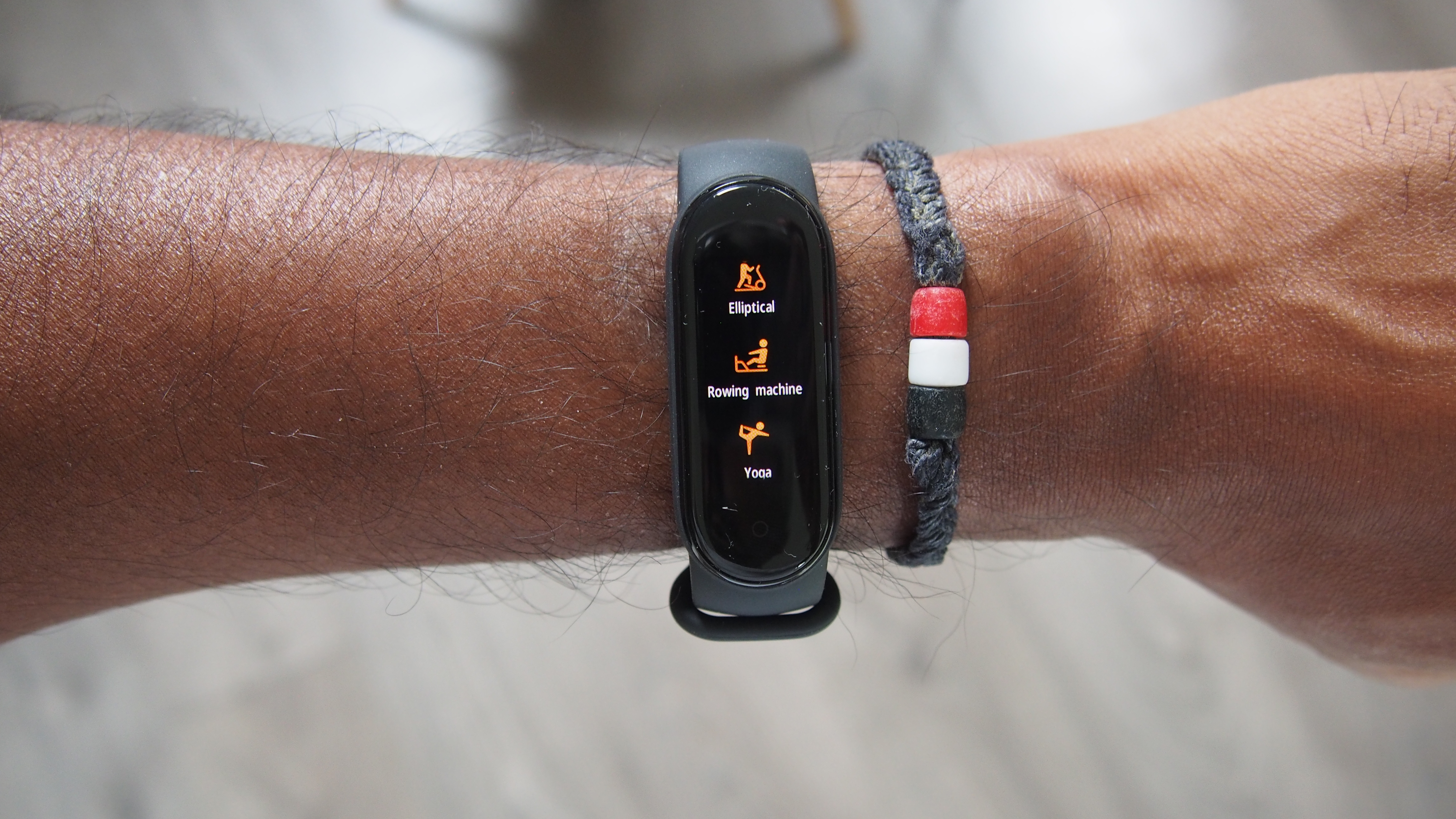
The design remains undeniably sporty and it's still fit to be worn while showering and swimming. Battery life is slated to be 14 days, which is more than what you can expect from rival trackers like the best Fitbit and Samsung devices. Xiaomi has also changed the charging set up, making it easier to power up when it hits 0%.
The global Mi Smart Band 5 does miss out on some desirable features including NFC for payments and Xiao AI smart assistant, but still offers a great fitness tracking experience for the money.
Xiaomi’s goal is to offer the kind of features you’d expect to find on pricier trackers, and it’s fair to say it successfully achieves that on the whole.
Price and release date
The Xiaomi Mi Smart Band 5 launched on July 16 2020, and is priced at $50 / £29.99 / AU$99.95. If you are not fussed about using it only in English, then it can be had for as little as $29.99 from Gearbest. You will get the Chinese version but if you install the Mi Fit application, update the firmware and sync the band, you will be able to change the language from Chinese to English. The price excludes delivery and any import fees or taxes.
Design
At first glance, the Mi Smart Band 5 at first glance doesn’t look all that different from the Xiaomi Mi Band 4. It still pairs up a similar-looking tracker module with a TPU plastic strap that comes in six different colors (compared to eight for the Chinese version).
It’s a bit of plain in terms of design, and less stylish than Fitbit's trackers, but it feels well built and nowhere as 'cheap' as some trackers at this price point.
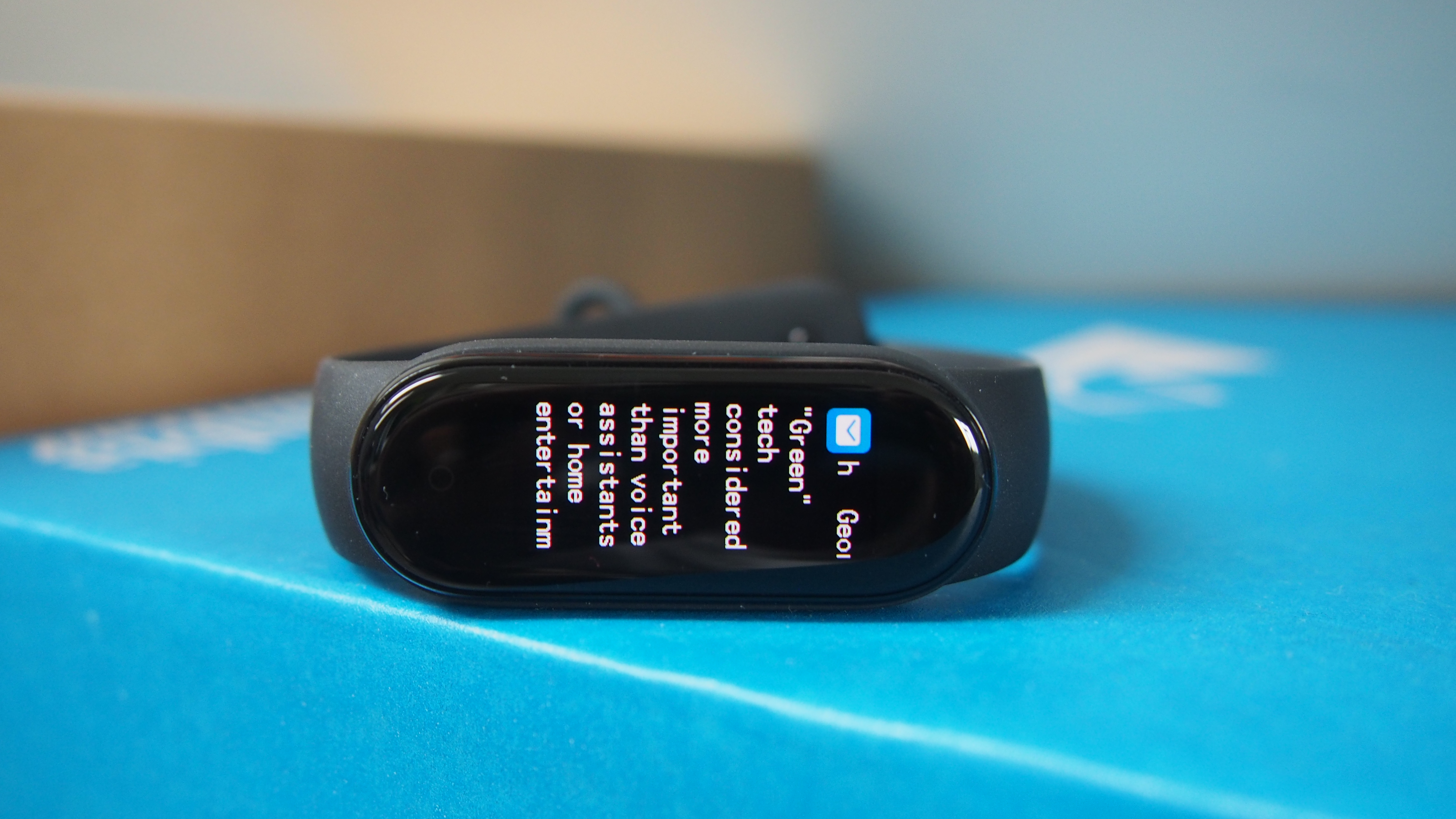
It’s the display that really elevates this tracker above the competition, though. Xiaomi uses a 1.1-inch, 126 x 294 resolution AMOLED touchscreen, which is a bump up in size and resolution on the 0.95, 120 x 240 resolution screen on the Mi Band 4. Xiaomi has also upped things in the brightness department, cranking up the max to 450 nits. The result is a display that pretty much wipes the floor with the competition.
Compare it to what you get on Fitbit or Samsung’s cheapest fitness trackers, and there’s no contest. The Mi Smart Band 5's screen is bright, colorful, responsive and crucially, easy to view in bright sunlight.
That extra screen real estate is also welcome because it means more information can be displayed at once, which is most noticeable on the watch screen. Xiaomi also seems to have increased the size of its icons, making it easier to glance at your information during the day.
Below that touchscreen display is a capacitive button, which is primarily used to wake the display up while around the back you’ll find the onboard heart rate monitor.
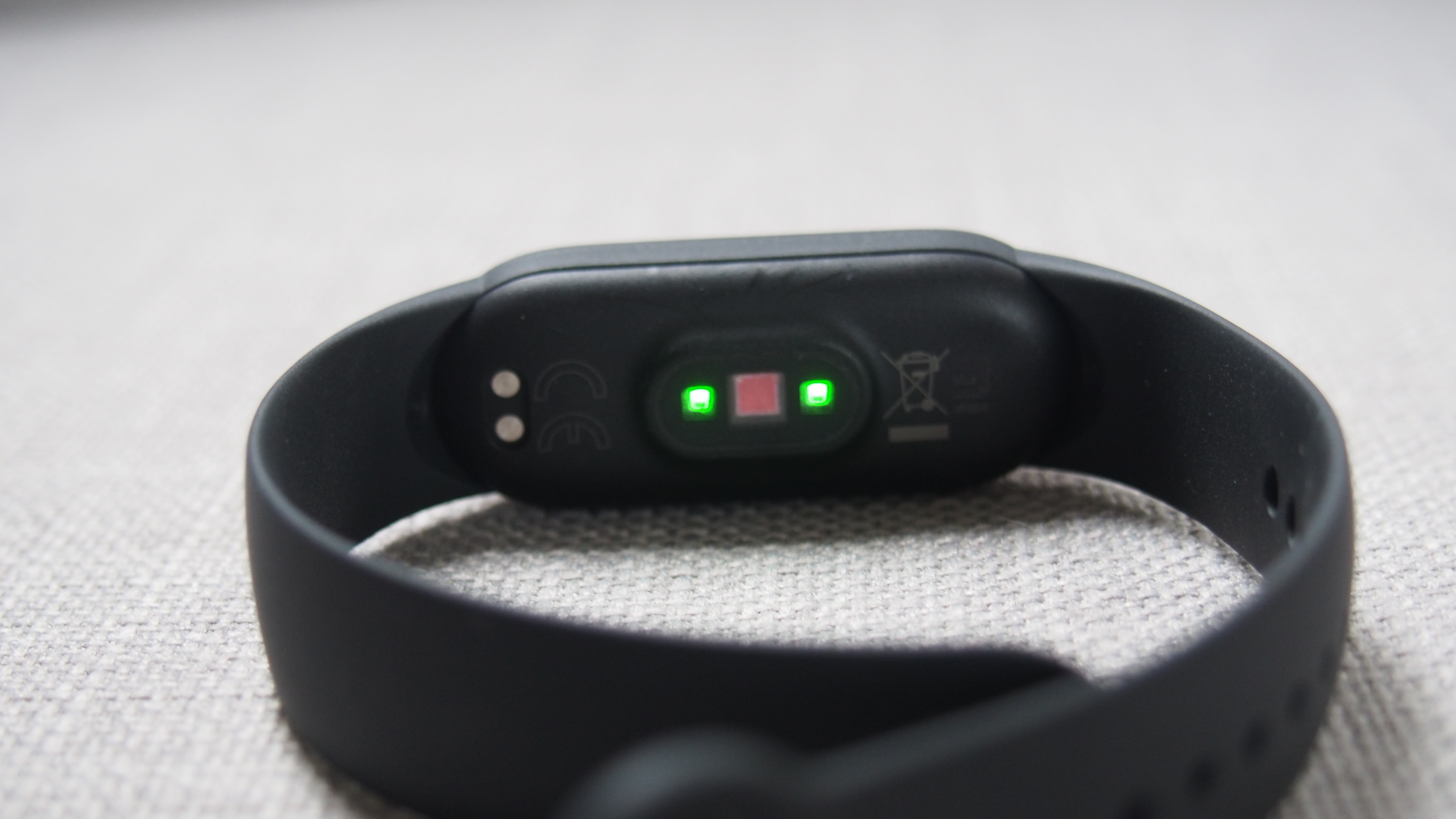
A more important detail to highlight around back is the change in the way the Mi Band is charged. Previously, you had to pull the tracker module out of the strap to plug it into its charging cradle. The new magnetic charging cable plugs directly into the back of the tracker, which means you no longer need to separate the tracker from the band.
Like its predecessor, the Mi Smart Band 5 has a 5ATM waterproof rating, which does make it suitable for jumping in the shower with it or putting its pool swim tracking features to good use.
Everyday use
With every new Mi Band, Xiaomi has sought to improve its uses outside of fitness and sports tracking and that doesn’t change with the Mi Smart Band 5. It’s compatible with Android phones and iPhones, bringing you features like the ability to view phone notifications, view weather forecasts, control music playback on your phone and taking smartphone photos remotely. Bottom line: it crams in a lot.
As far as the smartwatch experience goes, it’s a bit of a mix bag, simply because of the limited amount of space at your disposal. Music playback controls and weather forecasts are well optimized, but notifications still feel a little cramped.
Features like setting alarms and accessing the camera remote require digging into the Band’s settings, but thankfully it’s software that’s easy to get to grips with and navigate once you know where things live.
We shouldn’t forget to talk about the Band faces you have to pick from on that main screen. The bump in screen quality on the Mi Band 4 meant Xiaomi could be a bit more playful and adventurous with faces, and with the Mi Smart Band 5 it’s added a number of animated faces that need to be synced over from the Mi Fit companion app. You also have more control over what health and fitness data is displayed on those faces, which can be changed on the device itself.
It does seem that at least for the time being, Xiaomi has left out some of the more high profile branded faces it announced at launch, including the SpongeBob SquarePants faces we were very much looking forward to trying out.
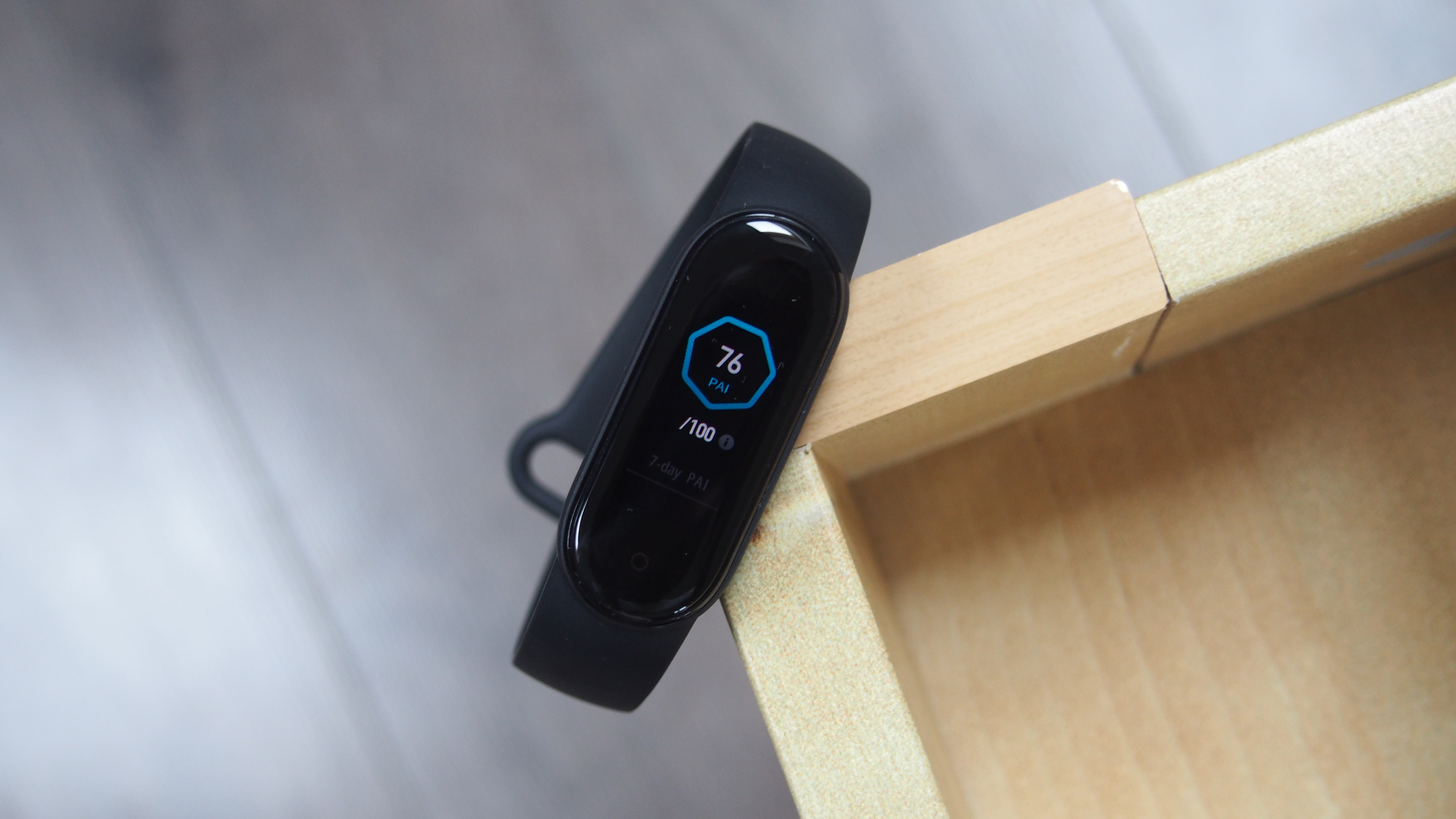
The Mi Smart Band 5 is light and comfortable to wear at night, and will automatically go about its business monitoring your sleep. To get the best sleep data, you’ll need to enable the sleep assistant mode in the companion app, though you'll be warned that this will affect its battery life.
In the morning you’ll get to see things like a sleep score, a breakdown of sleep including REM sleep, naps, sleep quality analysis, sleep regularity, and sleep data comparison with similar users.
In terms of the reliability of the data, we found that it tended to be in the ballpark for most data compared to another fitness tracker. It generally recorded the same amount of deep sleep and light sleep and usually an hour less of REM sleep. It was pretty reliable identifying when we’d fallen asleep and woken up. The sleep regularity and analysis are nice additions to the monitoring process too.
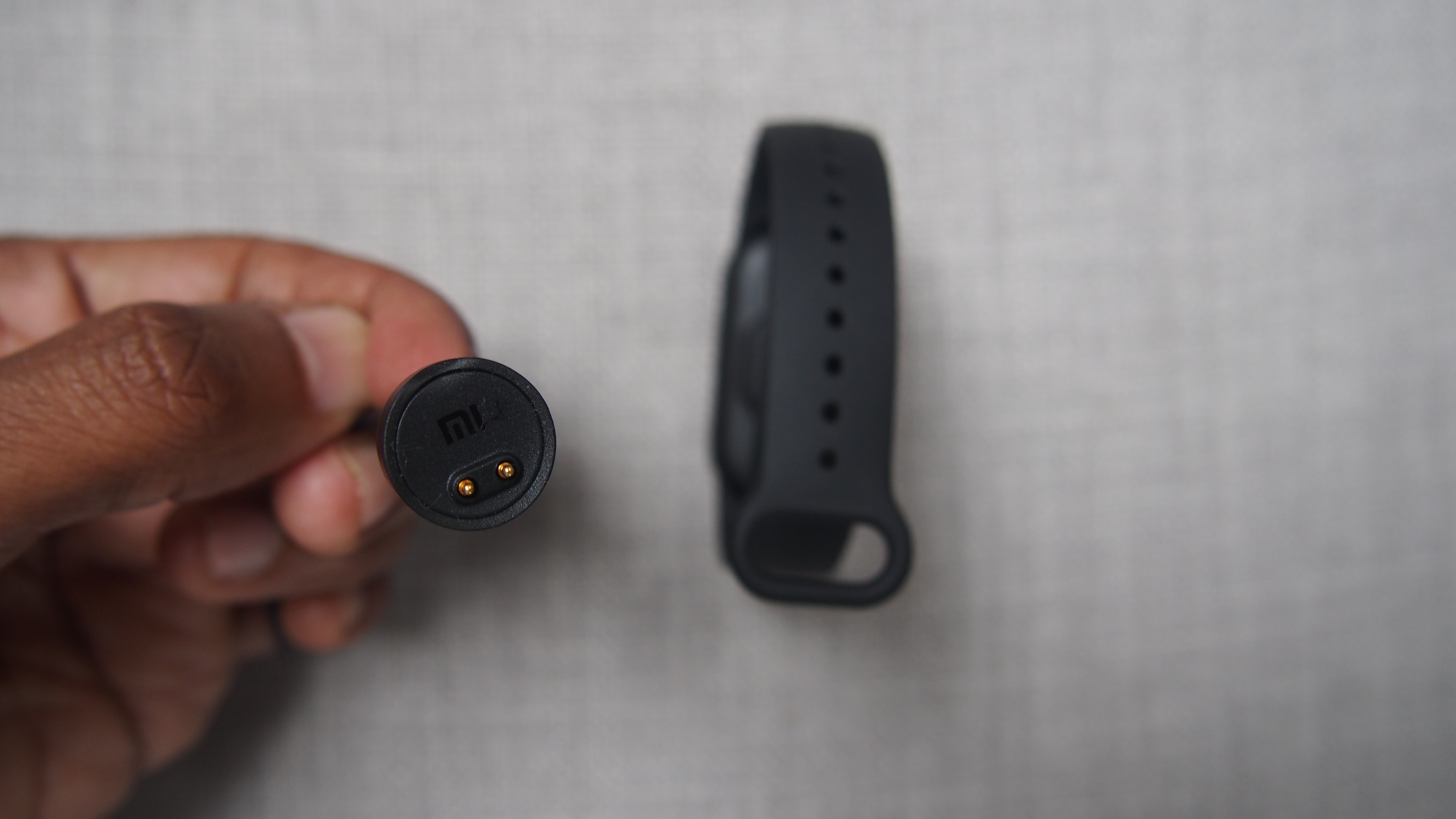
Xiaomi's fitness trackers have long been praised for their battery life, though this new model offers slightly less impressive performance than its predecessor. The Mi Smart Band 5 houses a 125mAh battery, which promises 14 days of uninterrupted use, whereas the Mi Band 4's 135mAh battery could last 20 days.
It is indeed possible to keep the Mi Smart Band 5 running for two weeks between charges, but what is very clear is that there are more features here that demand a lot more of that battery. Heart rate monitoring and turning on the sleep assistant for more accurate sleep tracking particularly have a noticeable impact. You can of course disable those feature, but unlike previous Mi Bands, you need to be careful about which features you’re using.
Fitness tracking
The Mi Smart Band 5 relies on the same sensors as its predecessor to deliver its fitness tracking features: namely accelerometer and gyroscope motion sensors, plus a heart rate monitor. There’s no built-in GPS, but you do have the option to use your phone’s GPS signal to map outdoor activities.
You can view basic fitness-tracking stats from the main watch screen or delve into the Status menu to see more. There you'll find your daily steps, distance covered, calories burned, idle alerts to indicate how much you’ve been inactive, and your seven-day step totals. Accuracy-wise, we put it up against a Garmin watch and found it produced similar data.
When you’re ready to step things up, head to the Workout screen where you can pick from 11 different sports modes. There’s outdoor running, power walking, cycling (indoor and outdoor), treadmill running, pool swimming, skipping, elliptical, yoga and a freestyle mode. As is typically the case, the range of real-time metrics on offer varies. Though we were surprised to find that it tracked strokes and stroke rate for indoor rowing, and even jumps for a skipping session.
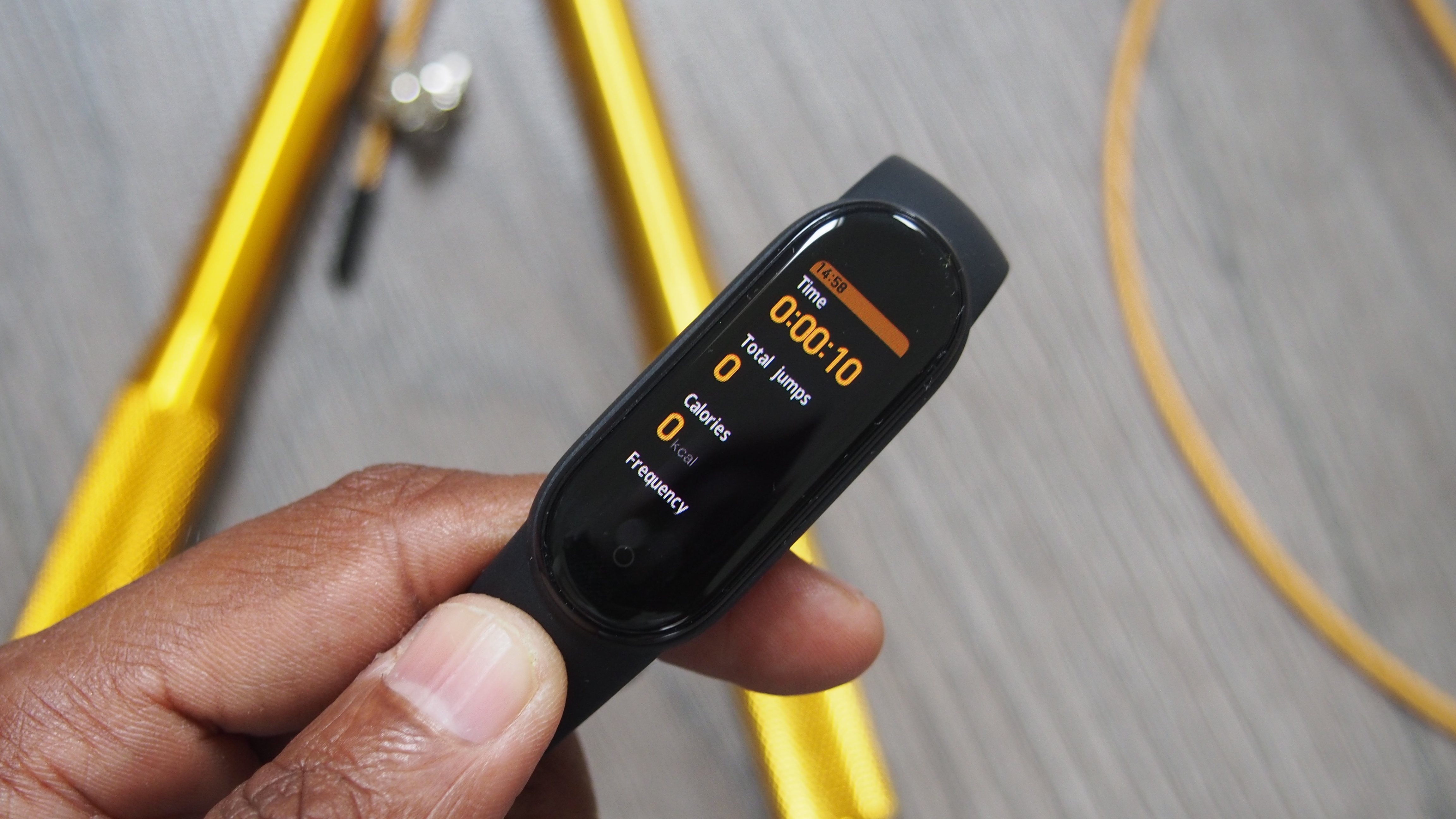
For core sports like running and swimming, it fares well from an accuracy point of view. Getting GPS support set up for outdoor activities is a bit fiddly because you need to head into the phone app to enable it, but once that’s done, you’ll be able to record key metrics like pace, distance and cadence, which we found to be pretty reliable.
You also get real-time heart rate data, with the option of alerts when you hit a certain level. Compared to a Polar H9 chest strap, the data accuracy was a mixed bag. On one run, it was 1-2 bpm out for average and maximum readings. On another run, average heart rate data was 2bpm off, which is acceptable. The maximum heart rate, however, was 8bpm different from the chest strap.
Things are a bit more reliable for on-the-spot readings, continuous monitoring, though as mentioned, turning on the latter does impact on battery life performance.
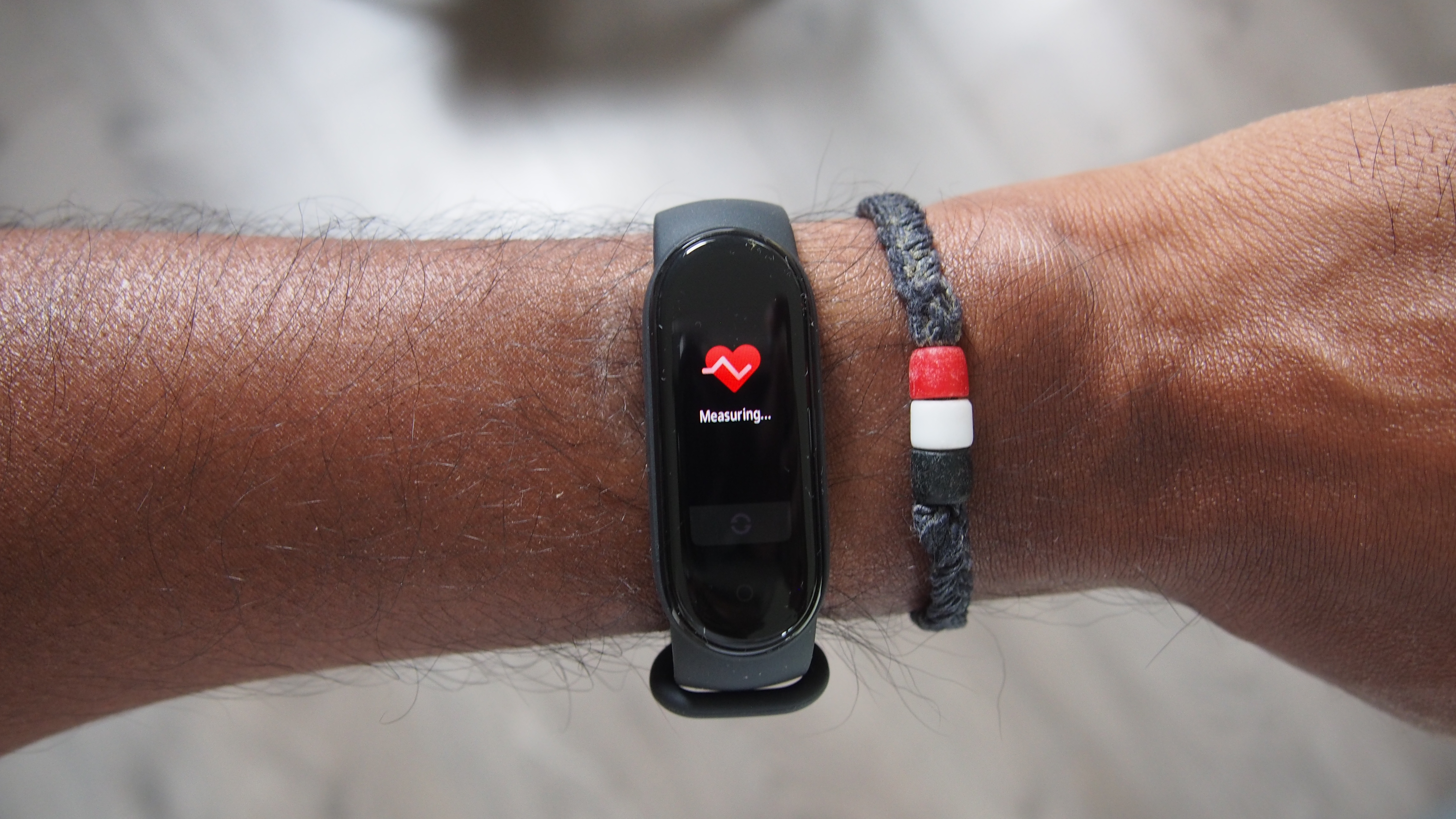
The heart rate sensor is put to use for a new feature and called PAI (Personal Activity Intelligence), which first appeared on Amazfit devices. This is intended to shift the focus away from hitting daily step counts to doing regular activities that raise your heart rate. You’re then given a PAI score to indicate your daily totals.
The idea of getting people to think more about heart rate than counting steps is actually a positive thing. It’s displayed nicely on the device, and if you want to see scores and get a better understanding of PAI scores, you'll find more detailed information in the Mi Fit app.
Other notable features include stress tracking and guided breathing exercises, which we've seen crop up on many other wearables, and round off a comprehensive set of features.
Companion app
While you can see a fair amount of data on the Mi Band itself, you’ll need to head to the Mi Fit companion phone app, which is compatible with Android and iOS. It’s here where you can see more in the way of trends and the place to adjust band settings.
From a syncing point of view, we had no issues with either iPhone or Android in our testing. You’ll need to jump into the app to sync data, and it’s pretty quick at syncing that data too.
The app itself can feel a bit busy. The Status screen gives you a snapshot of your most recent data, which you can dig into deeper if you like. There are also dedicated tracking screens for walking, cycling and running when you want to use your phone’s GPS, and you can connect with other Mi Band-owning friends.
Head to the profile tab and you’ll be able to adjust goals, connect to Apple Health or Google Fit, sync over new watch faces, and set up the type of notifications you want to receive on the device. There’s a fair amount to do here, so it’s definitely worth spending some time getting to know this page to really get a sense of what this fitness tracker can do.
Buy it if...
You want an affordable fitness tracker
Despite its a high quality touchscreen display and an impressive range of features, Xiaomi has managed to keep the price down and make the Mi Smart Band 5 feel much more expensive than it is.
You want a great screen
Xiaomi has managed to include of the best screens you’ll find on a fitness tracker, making viewing your data a joy – even compared to devices that cost a lot more.
You want a hybrid sports watch and fitness tracker
The Mi Smart Band 5 offers surprisingly rich tracking support for a range of activities. If you’re happy to head out with your phone, that connected GPS support will make sure you get a good hit of data too.
Don't buy it if...
You want something that looks stylish on the wrist
While Xiaomi offers additional bands, and the screen is exceptional, you can certainly find a tracker that has a bit more personality and can be dressed up to look less like a fitness band.
You need accurate heart rate data for fitness
When it comes to sports tracking the Mi Smart Band 5 is hit and miss in terms of accuracy. You don’t have support for external chest straps to improve that, either.
You’re hoping it will replace your wallet or purse
Unlike the Chinese version of the Mi Smart Band 5, there’s no NFC to support payments features. That said, you’d be hard pressed to find a tracker from a company other than Xiaomi that offers such features at this price.
First reviewed August 2020
- Check out our complete guide to the best running watches
Michael is a freelance journalist who has covered consumer technology for over a decade and specializes in wearable and fitness tech. Previously editor of Wareable, he also co-ran the features and reviews sections of T3, and has a long list of bylines in the world of consumer tech sites.
With a focus on fitness trackers, headphones, running wearables, phones, and tablet, he has written for numerous publications including Wired UK, GQ, Men's Fitness, BBC Science Focus, Metro and Stuff, and has appeared on the BBC Travel Show. Michael is a keen swimmer, a runner with a number of marathons under his belt, and is also the co-founder of YouTube channel The Run Testers.
